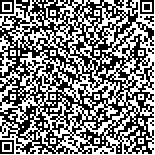肖少华,吴夏静,代菁,等.镜像治疗联合运动想象治疗对脑梗死早期患者下肢运动及平衡功能的影响[J].中华物理医学与康复杂志,2019,41(8):575-578
扫码阅读全文

|
| 镜像治疗联合运动想象治疗对脑梗死早期患者下肢运动及平衡功能的影响 |
|
| |
| DOI:DOI:10.3760/cma.j.issn.0254-1424.2019.08.004 |
| 中文关键词: 镜像治疗 运动想象治疗 脑梗死 运动控制 |
| 英文关键词: Mirror therapy Motor imagery therapy Ischemic stroke Motor control |
| 基金项目:温州市科技局项目(Y20170352) |
|
| 摘要点击次数: 5280 |
| 全文下载次数: 6141 |
| 中文摘要: |
| 目的 探讨镜像治疗联合运动想象治疗对脑梗死早期患者下肢运动及平衡功能、日常生活活动能力的影响。 方法 选取2016年11月~2018年3月在温州医科大学附属第一医院康复医学科住院治疗的脑梗死患者40例,利用随机数字表法将其分为联合治疗组和运动想象组,每组20例。在常规治疗基础上,运动想象组采用运动想象治疗进行膝关节伸展和踝关节背屈运动,联合治疗组采用下肢镜像治疗及运动想象治疗,2组患者每次训练30 min,每日1次,每周5 d,共8周。治疗前、治疗4周后及8周后,采用Fugl-Meyer运动功能量表下肢部分、Berg平衡量表(BBS)、改良Barthel指数(MBI)进行疗效评估。 结果 治疗前,2组患者FMA、BBS、MBI评分比较,差异无统计学意义(P>0.05)。与组内治疗前比较,联合治疗组治疗4周后FMA-LE、BBS、MBI平地行走评分增高(P<0.05)。运动想象组治疗4周后仅床椅转移、平地行走评分增高(P<0.05)。治疗8周后,联合治疗组FMA-LE、BBS、MBI进食、穿衣、修饰、洗澡、小便、床椅转移、上下楼梯、平地行走评分较组内治疗前改善(P<0.05)。运动想象组治疗8周后FMA-LE、BBS、MBI床椅转移、上下楼梯、平地行走评分较组内治疗前改善(P<0.05)。与运动想象组治疗后同时间点比较,联合治疗组治疗4周后MBI平地行走评分[(10.80±2.83)分]较高(P<0.05),治疗8周后FMA-LE[(24.50±6.17)分]、BBS[(37.85±9.03)分]、MBI床椅转移[(13.5±1.53)分]、上下楼梯[(9.30±1.59)分]、平地行走评分[(12.90±2.23)分]较高(P<0.05)。 结论 早期运动想象治疗能有效提高脑梗死早期患者的下肢运动功能、平衡能力及日常生活能力,在此基础上联合镜像训练能进一步改善患者的下肢运动表现和平衡功能。 |
| 英文摘要: |
| Objective To investigate the effect of the mirror therapy (MT) combined with motor imagery therapy (MIT) on the lower limb motor performance, balance and ability in the activities of daily living of ischemic stroke patients soon after a stroke. Methods Forty hospitalized ischemic stroke patients were randomly allocated to an MT+MIT group (n=20) or an MIT only group (n=20). In addition to routine rehabilitation, the MIT group exercised practicing knee extension and ankle dorsiflexion 30 minutes a day, five days a week for 8 weeks following motor imagery therapy protocols, while the MT+MIT group accepted MIT combined with mirror therapy. The Fugl-Meyer lower extremity assessment (FMA-LE), Berg Balance scores (BBSs) and the Modified Barthel index (MBI) were used to evaluate the effects of the treatment before the treatment and after 4 and 8 weeks of therapy. Results Before the intervention there was no significant difference between the two groups in terms of their average FMA, BBS and MBI ratings. After 4 weeks of treatment a significant improvement was observed in the MT+MIT group′s average FMA-LE and BBS scores and in the flat walking component of the MBI. In the MIT group only the average bed/wheelchair transfer and flat walking scores in the MBI were significantly improved. After 8 weeks the MT+MIT group′s average FMA-LE and BBS scores had improved significantly, along with its average scores in the feeding, dressing, grooming, bathing, urination, bed/wheelchair transfer, walking up and down stairs and flat walking components of the MBI. In the MIT group the average FMA-LE and BBS scores had improved significantly, along with those for bed/wheelchair transfer, walking up and down stairs and flat walking in the MBI. After both 4 and 8 weeks, the MT+MIT group′s average scores were consistently significantly better than those of the MT group. Conclusion Mirror therapy can significantly enhance the effectiveness of motor imagery therapy when they are combined in the rehabilitation of ischemic stroke patients in the early post-stroke stage. |
|
查看全文
查看/发表评论 下载PDF阅读器 |
| 关闭 |
|
|
|